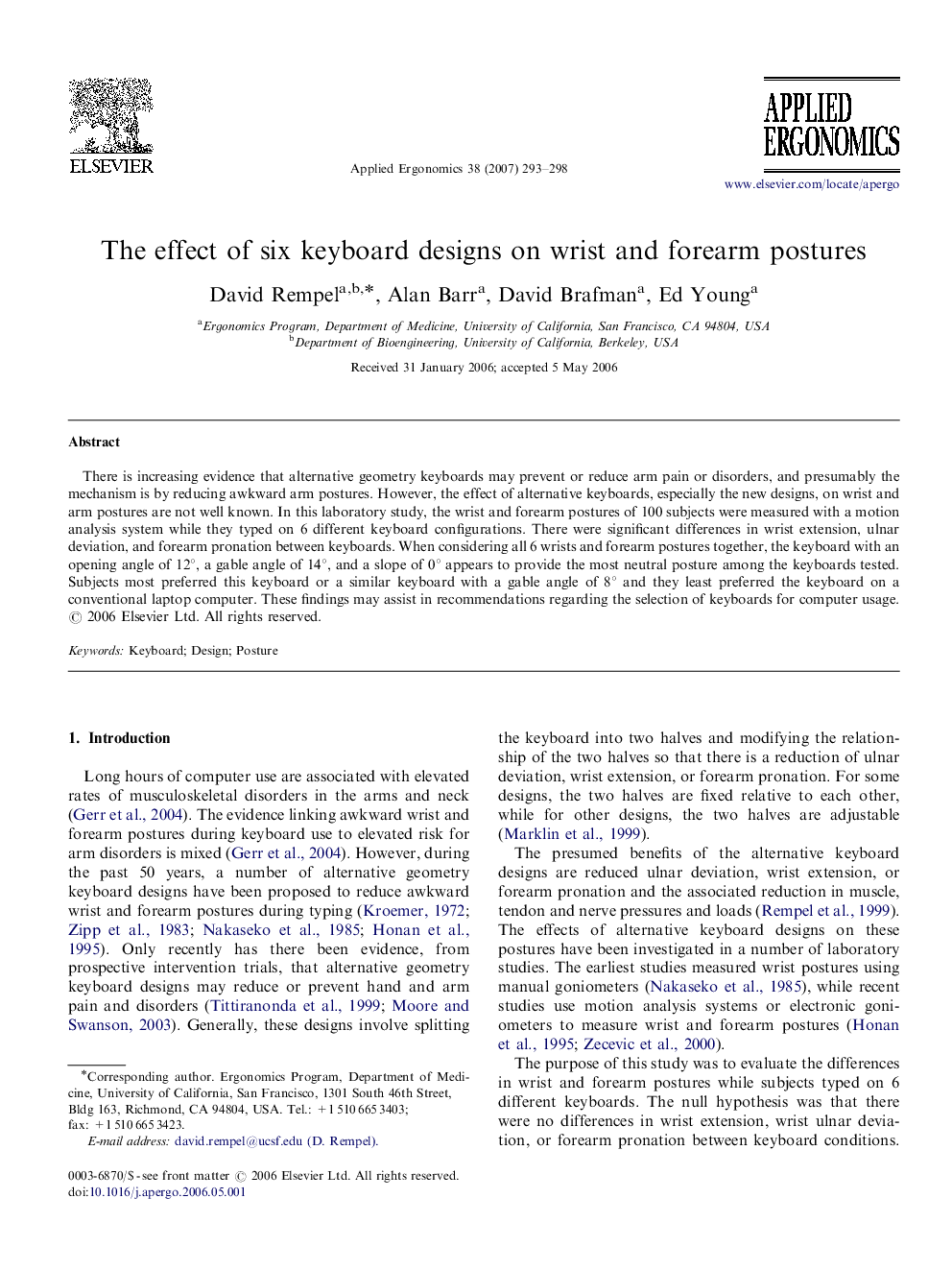| Article ID | Journal | Published Year | Pages | File Type |
|---|---|---|---|---|
| 548688 | Applied Ergonomics | 2007 | 6 Pages |
There is increasing evidence that alternative geometry keyboards may prevent or reduce arm pain or disorders, and presumably the mechanism is by reducing awkward arm postures. However, the effect of alternative keyboards, especially the new designs, on wrist and arm postures are not well known. In this laboratory study, the wrist and forearm postures of 100 subjects were measured with a motion analysis system while they typed on 6 different keyboard configurations. There were significant differences in wrist extension, ulnar deviation, and forearm pronation between keyboards. When considering all 6 wrists and forearm postures together, the keyboard with an opening angle of 12°, a gable angle of 14°, and a slope of 0° appears to provide the most neutral posture among the keyboards tested. Subjects most preferred this keyboard or a similar keyboard with a gable angle of 8° and they least preferred the keyboard on a conventional laptop computer. These findings may assist in recommendations regarding the selection of keyboards for computer usage.
